Post-Call Survey 101
Most call center leader aspires to deliver great customer service, contributing to retaining customers and having them refer their company to others. SQM Group believes there is no better practice to achieve this aspiration than conducting Post-Call Surveys to determine the customer service a call center delivers. The main reason for this belief is that the customer's opinion matters most when assessing customer experience (CX) delivery and the opportunities to improve CX.
This blog is a comprehensive guide for conducting Post-Call Surveys to measure, track, benchmark, and improve customer service. The Post-Call Survey guide was developed based on SQM Group's over 25 years of measuring, tracking, benchmarking, and improving customer service with leading North American call centers. This guide will answer the following five Post-Call Surveying questions.
Discover the following:
- What is a Post-Call Survey?
- Why Are Post-Call Surveys Important?
- What Are the Top 10 CX Metric Questions?
- How to Conduct Post-Call Surveys?
- How to Action Post-Call Surveys?
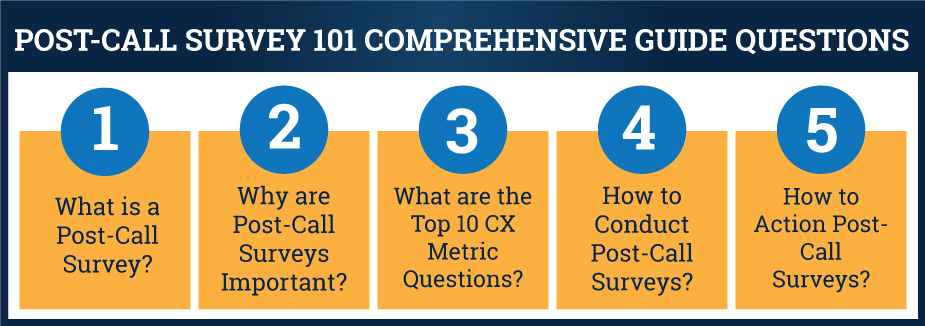
1. What Is a Post-Call Survey?
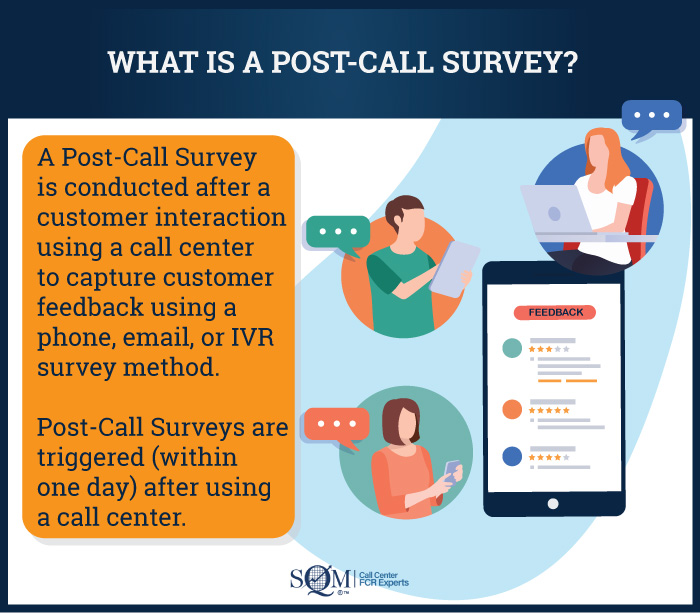
A Post-Call Survey is conducted after a customer interaction using a call center to capture customer feedback using a phone, email, or IVR survey method. Post-Call Surveys are triggered (within one day) after using a call center. For example, once an interaction ends, a customer is invited to complete a post-call phone, email, or IVR survey to determine if the inquiry or problem was resolved on the first call and satisfaction.
Call centers use a survey to gather customer feedback, analyze the collected data, and report it to help improve their service delivery. Furthermore, using Post-Call Survey data and feedback is a best practice for determining agent Csat delivery and coaching them to provide great customer service. As a result, most high customer satisfaction (Csat) performing call centers use Post-Call Survey data and feedback for agent coaching and accountability. In addition, Post-Call Surveys are used to ask callers specific questions about their interaction with the call center experience and provide the following CX insights:
- First Call Resolution
- Customer Satisfaction
- Agent's Ability to Resolve Calls
- Interactional NPS
- Opportunities to Improve CX
2. Why Is a Post-Call Survey Important?
It has been SQM's experience that call centers conducting Post-Call Surveys on customers' experiences trying to resolve an inquiry or problem is more likely to improve CX. In fact, 70% of SQM clients who have conducted Post-Call Surveys for over one year have improved First Call Resolution and Customer Satisfaction. Furthermore, call centers that deliver great customer service have one thing in common, they use Post-Call Surveys to measure, benchmark, and improve FCR and Csat.
High-performing FCR and Csat call centers understand the best way to provide outstanding customer service is to tap into Post-Call Survey listening posts. Furthermore, they know that if you are willing to listen, customers will tell you everything you need to know to improve your FCR and customer service. Most importantly, Voice of the Customer (VoC) leaders action customer feedback opportunities to improve customer service. Therefore, at SQM, we believe that if the call center's mission is to deliver great customer service Post-Call Survey is a must.

Unfortunately, most call centers do not measure the customer service impact on customer retention. Using a Post-Call Survey to get feedback from customers about continuing to do business with their company as a result of the customer service delivery is a valuable insight into determining what actions if any, are required.
SQM Group's research shows that Post-Call/Email Survey is considered by call center leaders as the best method for assessing their customer service delivery. Leaders also think quality assurance (QA) effectively evaluates customer service delivery. However, most leaders do not feel agent feedback, average handle time, and service level are as strong as Post-Call Survey and QA methods for assessing customer service delivery. Furthermore, using Post-Call Surveying to assist agent coaching has a proven track record for increasing FCR rate and improving Csat. In addition, most agents prefer the customer to judge their call quality versus a QA evaluator.
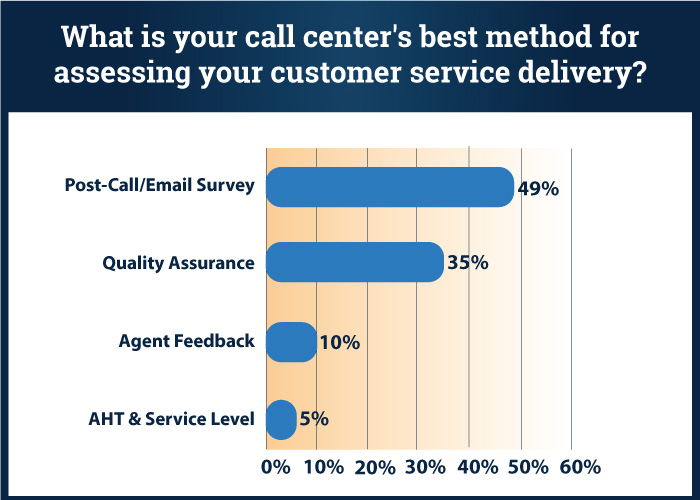
3. What Are the Top 10 CX Metrics and Corresponding Post-Call Survey Questions?
The Top 10 customer experience metrics apply to any industry and customer touchpoint (e.g., call center, email, chat, IVR, and website) interaction to resolve an inquiry or problem. The Top 10 CX metrics are based on SQM's experience of measuring, tracking, and benchmarking over 500 leading North American call centers and conducting over 5 million Post-Call Surveys with customers who used a touchpoint. SQM has conducted touchpoint Post-Call Surveying CX tracking and benchmarking studies since 1996.
The below figure illustrates a cascading perspective of the Top 10 CX Metrics. The leading CX metrics are contact resolution, FCR, OCR, Customer Satisfaction, Customer Emotion, Seamless Experience, and Omni-Channel Experience. In addition, leading CX metrics positively or negatively impact the performance of lagging metrics such as CX Greatness, Net Promoter Score®, and Net Retention Index. Consequently, when leading CX metric performances are high or low, so too are the performances of the lagging CX metrics.
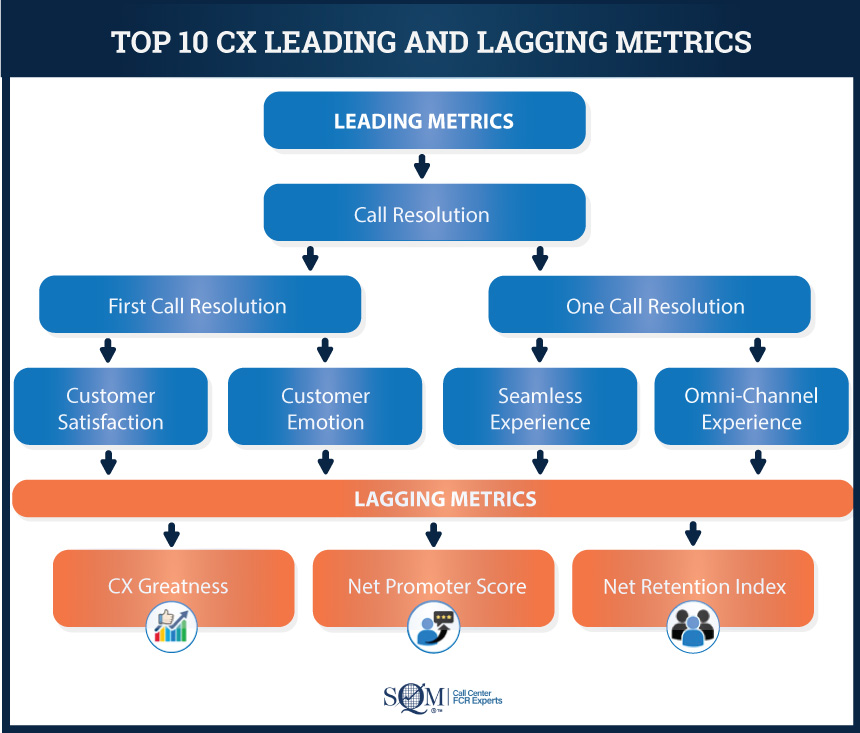
Post-Call Survey Questions
SQM's Top 10 CX Metrics provides valuable insights into customers' experiences when using a touchpoint or multiple touchpoints to resolve an inquiry or problem. Below are the corresponding Post-Call Survey questions for the top 10 CX metrics SQM Group uses to benchmark customer service performance for over 500 leading North American call centers.
Call Resolution
Did XYZ Company's call center resolve your inquiry?
- Yes, or
- No
First Call Resolution
Did XYZ Company's call center resolve your inquiry?
- Yes, or
- No
In total, how many calls did you have to make to their call center to resolve/try to resolve your initial inquiry?
- 1 call
- 2 calls
- 3 calls, or
- 4 or more calls
One Call Resolution
Did XYZ Company's call center resolve your inquiry?
- Yes, or
- No
In total, how many calls did you have to make to their call center to resolve/try to resolve your initial inquiry?
- 1 call
- 2 calls
- 3 calls, or
- 4 or more calls
Did you try to resolve your inquiry by contacting XYZ Company in any other way, such as their website, email, or online chat?
- Yes, before you called the call center
- Yes, at the same time as your call to the call center
- Yes, after you called the call center, or
- No, you only used the call center
Customer Satisfaction
Overall, how satisfied are you with XYZ Company's call center customer service based on your last call?
- Very satisfied
- Satisfied
- Neutral
- Dissatisfied, or
- Very dissatisfied
Note: Many call centers use the Csat question to measure call center, agent, and MoT metrics.
Customer Emotion
Overall how did you feel about your entire experience trying to resolve your inquiry?
- Perfect
- Excellent
- Good
- Frustrating, or
- Totally Unacceptable
Seamless Experience
Did you try to resolve your inquiry by contacting XYZ Company in any other way, such as their website, email, or online chat?
- Yes, before you called the call center
- Yes, at the same time as your call to the call center
- Yes, after you called the call center, or
- Dissatisfied, or
- No, you only used the call center
Note: Ask the below question if the customer said yes to the above question.
When you used more than one contact method to resolve your inquiry, did you have to start your interaction over again, or was it a seamless experience?
- You had to start over, or
- It was a seamless experience
Omni-Channel Csat
Did you try to resolve your inquiry by contacting XYZ Company in any other way, such as their website, email, or online chat?
- Yes, before you called the call center
- Yes, at the same time as your call to the call center
- Yes, after you called the call center, or
- No, you only used the call center
Note: Ask the below question if the customer said yes to the above question.
Thinking about your entire experience using the different methods of contact to resolve your inquiry, what is your overall level of satisfaction?
- Very satisfied
- Satisfied
- Neutral
- Dissatisfied, or
- Very dissatisfied
CX Greatness
Based on your recent call center experience, how would you rate your overall relationship with the organization?
- Great
- Good
- Average
- Poor, or
- Very poor
Net Promoter Score™
Based on your recent call center experience and using a scale of 0 to 10, where 0 means "Not at All Likely," and 10 means "Extremely Likely," how likely are you to recommend XYZ Company to a friend or colleague?
Net Retention Index
Based on your recent call center experience and if you had the choice, using a scale of 0 to 10, where 0 means "Not at All Likely," and 10 means "Extremely Likely," how likely are you to continue to do business with XYZ Company?
4. How to Conduct Post-Call Surveys?
Post-Call Surveys are vital in measuring customers' experience using a call center to resolve their inquiries or problems. Unfortunately, many customers can sometimes see it differently and do not want to complete a survey about their call center experiences. Therefore, we are frequently asked how to communicate the value of completing a Post-Call Survey to increase their survey response rate. But before we provide tips on how to complete Post-Call Surveys, we thought it would be helpful to share some survey response rate insights.
What Is a Good Post-Call Survey Rate?
So, what is a good Post-Call Survey Response Rate? Factors that impact the survey response rate include survey method (e.g., phone, email, and IVR), how you attract a customer to complete the survey, customer type (e.g., B2B, B2C), CX, and if you make it easy for them to complete the survey. Often, the most significant incentive for a customer to complete a Post-Call Survey is knowing that their opinions are valued and will result in real CX improvements.

Post-Call Survey Response Rates: Benchmarks from our 2022 Data
The Post-Call Survey ranges for email and phone survey methods conducted within one business day from customer interaction with the call center ranged from 3% to 25% among callers. The following is the Post-Call Survey average for different survey methods:
- 7.5% for Phone Surveys
- 7.4% for Email Surveys
10 Tips for Conducting Post-Call Surveys to Improve CX
Below are questions and tips to consider for conducting Post-Call Surveys.
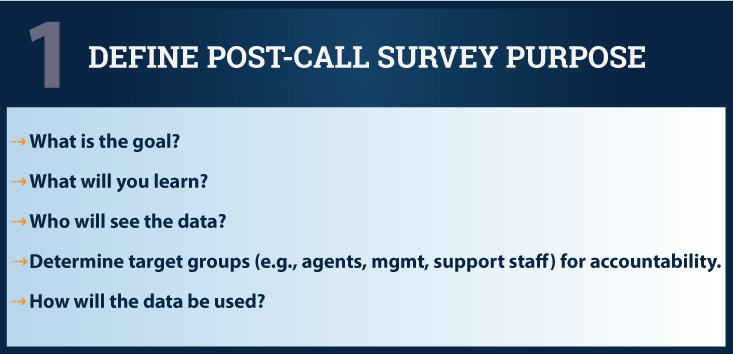
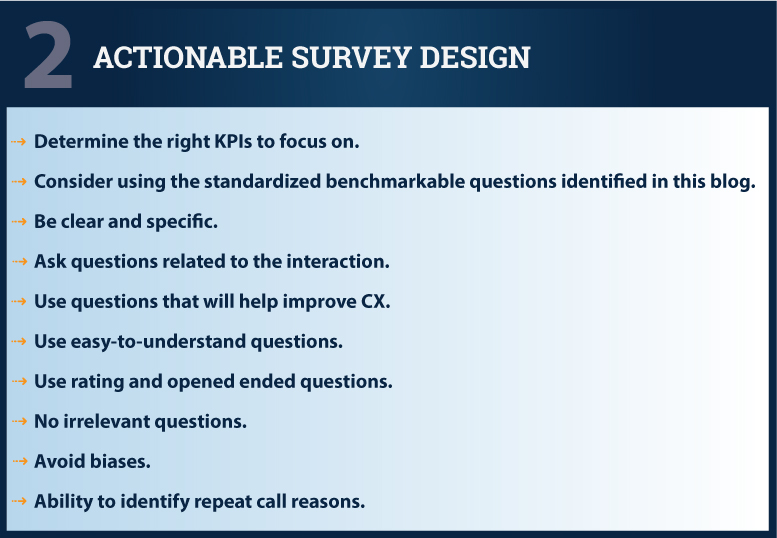
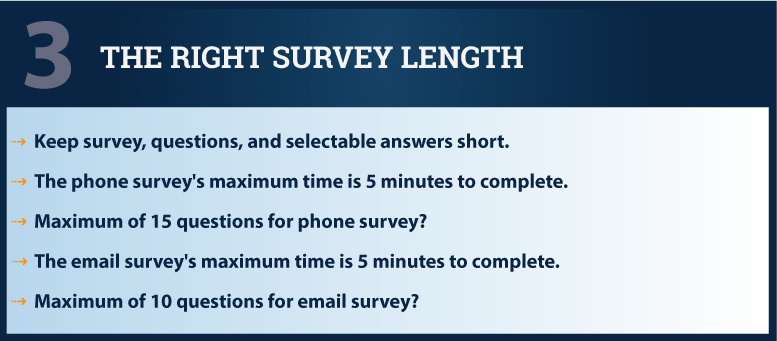
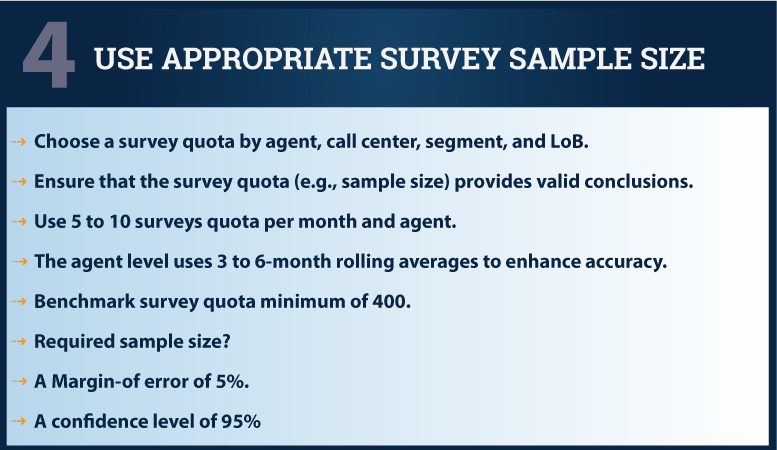
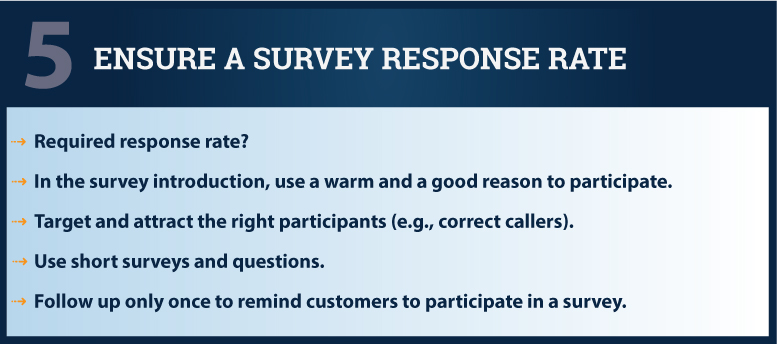
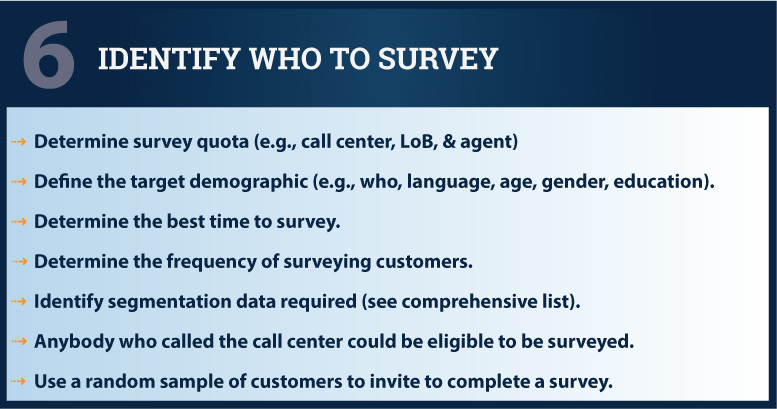
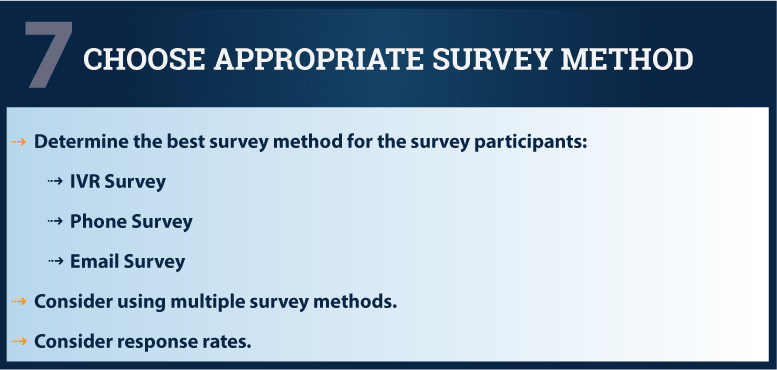
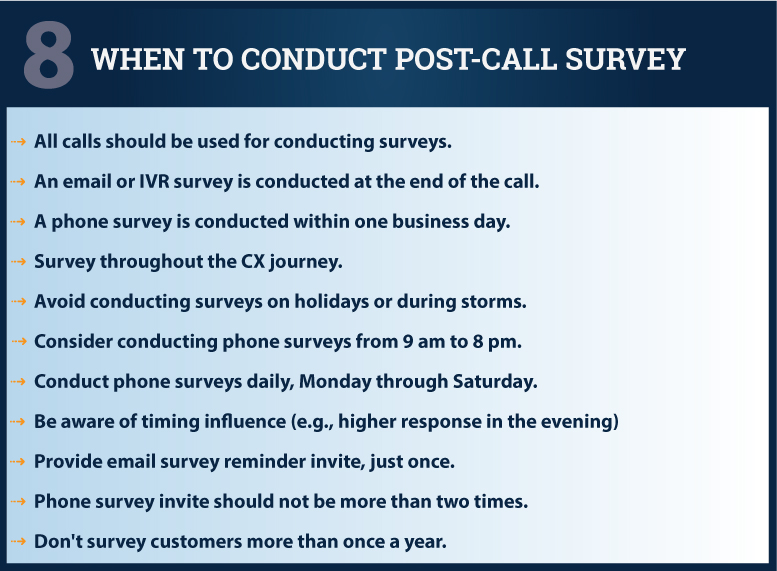
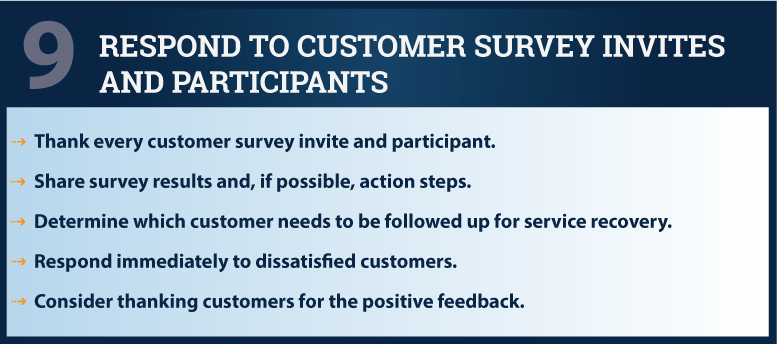
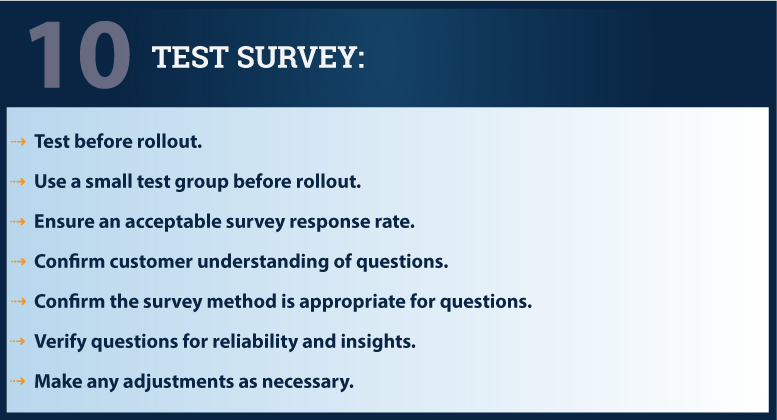
5. How to Action Post-Call Surveys?
An essential aspect of any Post-Call Survey effort is to share the CX results to keep employees informed about the CX performance and to action the customer feedback to improve CX and provide service recovery. Unfortunately, SQM's experience of actioning Post-Call Survey feedback tends to be the weakest aspect of a VoC program for most call centers. The primary reasons for not actioning Post-Call Survey feedback are competing projects and limited resources (e.g., people, processes, and technology).
It is often said that call centers invest too much time analyzing the vast amount of data they collect and less time actioning the data insights. However, analyzing the Post-Call Survey data is crucial to be able to action the customer feedback. Some call centers are more comfortable just analyzing data, and they are what SQM calls 'analysis paralysis' call centers. Another prominent reason call centers struggle with actioning Post-Call Survey feedback is that they do not know how to use the data insights to improve First Call Resolution and customer service performance.
The below figure shows best practices for actioning Post-Call Survey feedback that SQM uses to counsel clients on how to improve FCR and customer service performance. The actioning Post-Call Survey model shows the three distinct stages for actioning customer survey feedback (i.e., 1 - Customer Identification, 2 - Analyzing Calls, and 3 - Improving FCR and Customer Service).
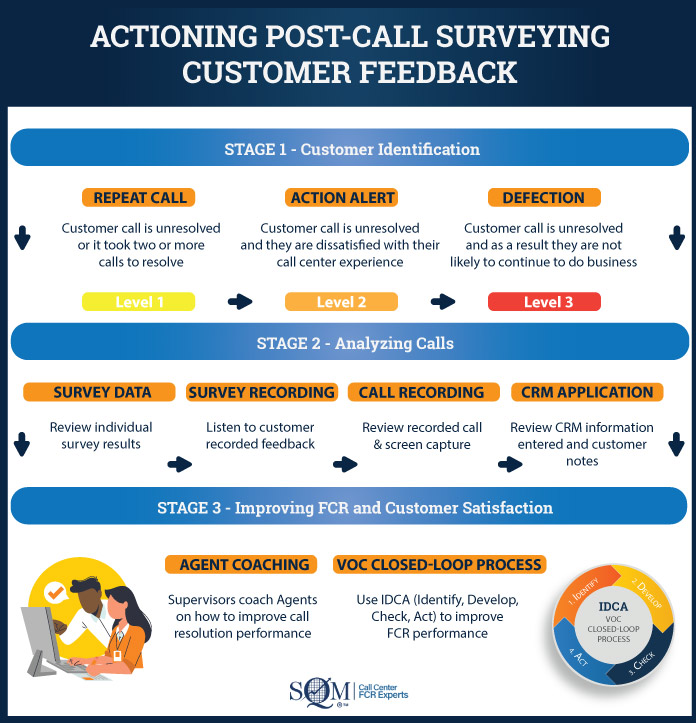
The first stage is 'customer identification' for the level of satisfaction/dissatisfaction the customer had with their experience in calling the call center. There are three levels of customer dissatisfaction, with 'Level 1' having the lowest level of customer dissatisfaction and 'Level 3' having the highest level of customer dissatisfaction.
'Level 1' customer call that is resolved does not require further action. However, if the call is unresolved, the supervisor or escalation Agent should action this call within one business day of surveying the customer to resolve their issue or problem.
'Level 2' customer call does require action by someone within the organization within one business day of surveying the customer to attempt to resolve their issue or problem.
'Level 3' customers should be contacted by someone within the organization immediately after surveying the customer, or at least within one business day of surveying them, to resolve their issue or problem and achieve customer retention.
The second stage is 'analyzing calls' to determine why the customer's call was unresolved and dissatisfied. Four different analysis areas should be conducted to determine why the customer's call was unresolved and dissatisfied (e.g., survey data, survey recording, call recording, and CRM).
'Survey data' and 'recorded survey feedback' steps are when a supervisor or analyst reviews the results of an individual survey to understand why the call was unresolved. When analyzing a survey, it is helpful to review the customer ratings and feedback before listening to the call recording, screen capture, and checking the information in the CRM system.
The 'Call recording' step is based on a customer being surveyed, and their call was recorded, and a screen capture is available. For example, the call is evaluated using what SQM calls a Customer Quality Assurance (CQA) approach. CQA combines call compliance metrics, judged by a QA evaluator via a call recording, and service quality metrics, judged by a customer via a post-call or email customer survey.
The 'CRM' step is also based on a customer being surveyed to identify which customers should be analyzed using customer relationship management software. In this step, the call is evaluated using a CRM system. SQM's experience using the CRM system is an excellent approach for determining what happened on the call, as long as the agent took good notes.
The third stage focuses on 'improving FCR and Csat.' There are two different areas for improving FCR, call resolution, and Csat; Agent coaching and the VoC Closed-Loop Improvement Process (i.e., IDCA – Identity, Develop, Check and Act). Both areas are designed to use Post-Call Survey feedback as the foundation and starting point for improving customer service performance.
'Agent coaching' to be effective requires that an agent understands their VoC performance and what is expected. Using an agent VoC dashboard accessible through their desktop is a best practice to ensure that agents have a clear understanding of what is expected of them and what they will be held accountable for. Agent desktop VoC data needs to be updated on an hourly or daily basis, and the agents need to have access to VoC data at any time. To see an excellent example of an agent VoC dashboard, click here.
'VoC Closed-Loop' improvement process is a well-accepted ongoing business practice for identifying what areas to improve and for implementing people, process, and technology practices that will improve FCR and customer service performance on an ongoing basis. The basic premise of the VoC Closed-Loop process is to form an FCR improvement team and use VoC data (e.g., post-call survey and CRM/call recording systems) to identify, analyze, and develop solutions to action for improving customer service.
Quick Related Links
First Call Resolution Comprehensive Guide Customer Satisfaction Comprehensive Guide Agent Coaching Customer Quality Assurance VoC Closed-loop Good to Great Customer Service
